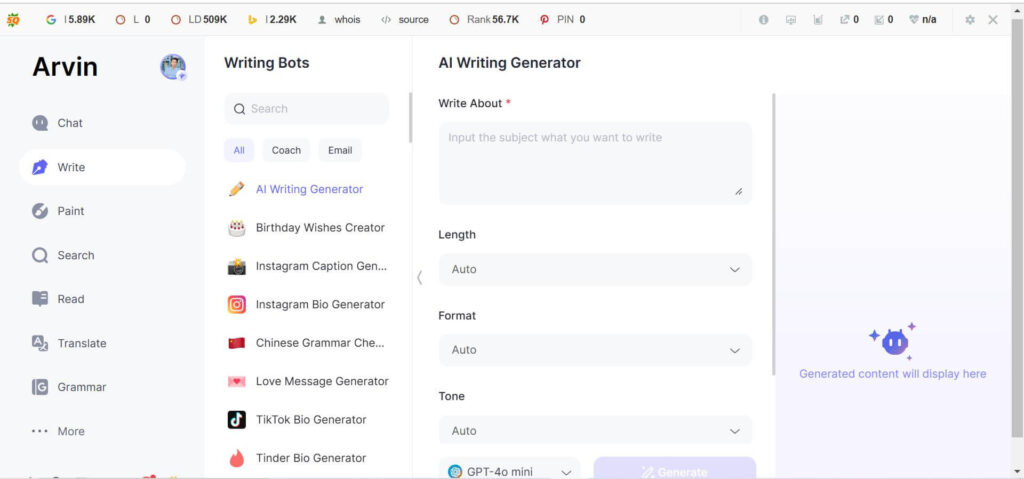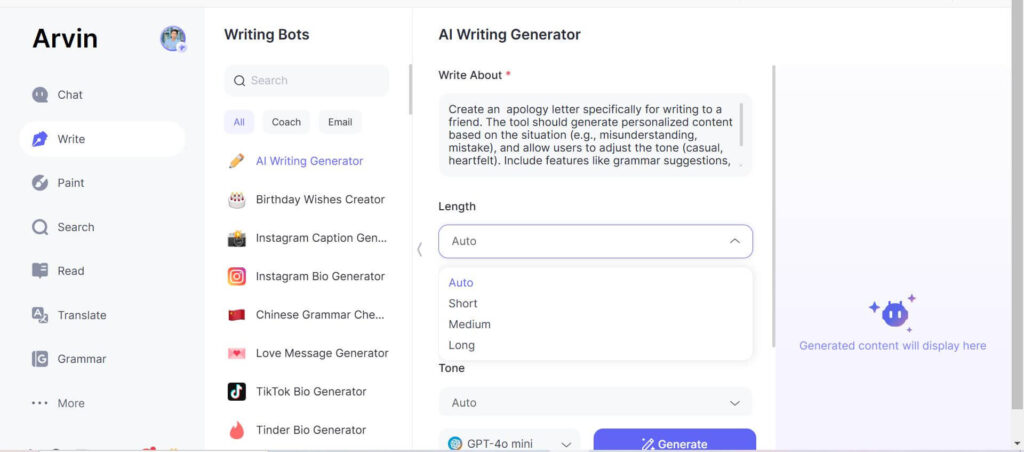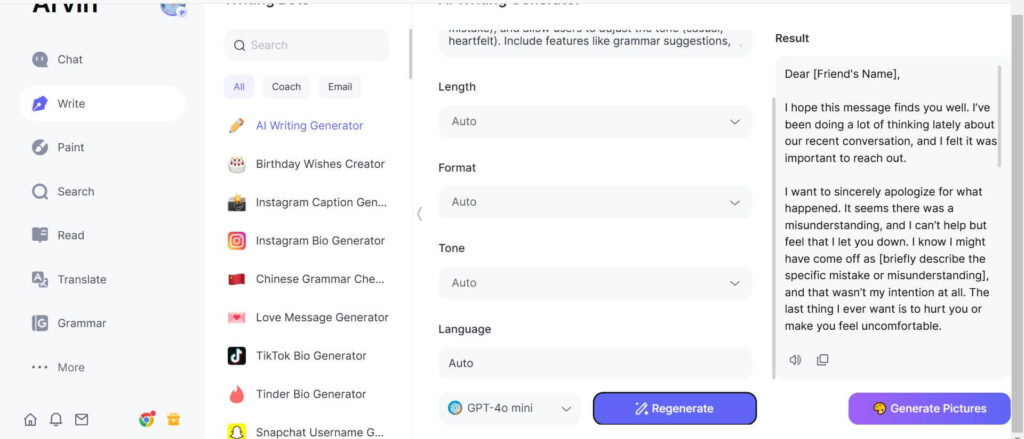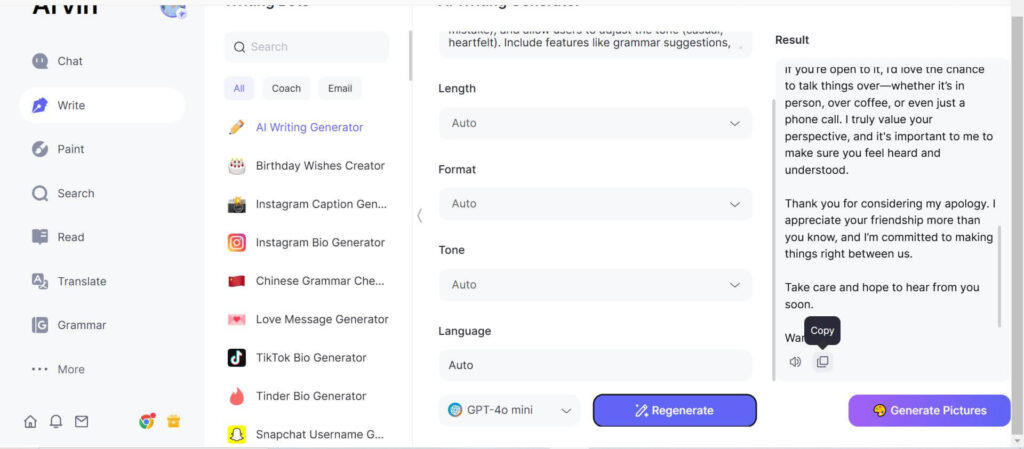Apology letters are extremely important in both personal and professional life because they help apologize and mend broken relationships. From a personal standpoint, for example, an apology letter may be written to a love one, or from a professional viewpoint, an apology letter is written to a colleague. In this article, we will guide you through why people need to be sorry, the emotional benefits, psychological gains, and more importantly the dos and dont’s on writing an effective letter of apology.
The Importance of Apologizing
Psychological and Emotional Benefits of Apologies
Apologies are not just about saying “sorry.” They can have really profound psychological and emotional effects. In taking responsibility for what one has done, an apology helps alleviate the conscience and reduces guilt. On a deeper level, an apology can help restore emotional balance for both the giver and the recipient. It acknowledges the pain or discomfort caused, showing empathy and understanding.
Social and Cultural Implications of Apologies
Apologizing is greatly influence by social and cultural settings. In many cultures, apologizing is considering the way to maintain harmony and respect other people. In personal relations, an apology at the right time can show maturity and emotional intelligence. At work, apologies are the means of acknowledging mistakes while maintaining professionalism and integrity at the workplace.
How Apologies Rebuild Trust and Relationships/
An apology should be able to rebuild the trust between individuals. Mostly, when people do something bad to another, they break a relationship and also the confidence between them, and hence, an apology would work as a stepping stone towards recovering the relationship. An authentic apology about doing wrong, along with the desire to compensate or rectify it, will offer an opportunity for forgiveness.
Key Elements of a Perfect Apology Letter
Understanding the Recipient’s Perspective
The first and most important element of an effective apology letter understands the recipient’s perspective. To truly apologize, you need to show the other person that you feel his or her pain, frustration, or disappointment and, by doing so, make them understand how your actions affected them. Empathy is important in writing an apology letter since it demonstrates that you have taken your time to reflect on the feelings of the recipient.
Structure of an Apology Letter
An apology letter should be written in a way that is clear, concise, and respectful. Here is how to approach each part:
- Opening: Regretting Sincere expression of regret that opens the apology letter has to be forthright and authentic about acknowledging the mistake. Sentences like, “I strongly regret that.” or “I am really sorry for.” can be used at the beginning of the letter. The language used here should not be one which negates the apology being express.
- Body: Clarification of What Happened without Making Excuses Provide clarification in the body of the letter as to what occurred, but do not use this area of the letter to attempt to excuse your actions. Stick to identifying the words and/or actions that hurt the people and accepting full responsibility.
- Closing: Providing Solutions or Commitments the closing of the letter must show you are commit to correcting the mistake. Provide solutions or steps you will undertake to ensure such a mistake doesn’t happen again. You may include concrete steps you’re willing to take or changes you will make.
Dos and Don’ts in Apology Letters
For an apology letter to be taking positively, one has to consider dos and avoid certain things.
Dos:
- Be sincere: Any apology starts with being sincere. The words have to come from the heart.
- Acknowledge the harm done: One always needs to admit that which was hurt by their action instead of making light of it.
- Offer to make things right: Show that you’re willing to take actions to repair the damage.
- Use “I” statements: Take full responsibility for your actions by using statements like, “I realize that I.”
Don’ts:
- Avoid excuses: Do not try to justify your actions or shift the blame. Even if there were mitigating circumstances, focus on the impact of your actions.
- Don’t rush the apology: Take the time to reflect on the situation and craft a thoughtful message.
- Don’t make it about yourself: Avoid talking about how hard the situation was for you; talk about how it affected the other person.
Examples of Effective Phrases:
- “I am so sorry that my actions hurt you.”
- “I realize how my behavior impacted you, and I am truly sorry.”
- “I will do everything in my power to ensure this never happens again.”
- “Please let me know if there’s anything I can do to make this right.”
By following these tips and structuring your apology letter thoughtfully, you can effectively communicate your regret and work toward mending relationships, whether personal or professional.
Types of Apology Letters
Apology letters are powerful tools to mend personal and professional relationships. It demonstrates responsibility, empathy, and the willingness to make amends. Understanding the different types of apology letters helps craft the right message for every situation. Below are the main categories of apology letters, each serving different purposes and audiences?
Personal Apology Letters
Personal apology letters are address to those we are closely relate to, for example, friends, family, or spouses. The letter expresses remorse for personal mistakes or misunderstandings, and the letter is intended to rebuild trust and emotional connection.
Apologizing to Friends and Family
When apologizing to friends or family, the tone of the letter should appear very sincere and heartfelt. Any form of personal apology requires admitting hurt, empathy, and expression with the reasons if deemed necessary. Most of such letters are written after moments of conflict or neglect, therefore requiring a letter that reminds them of their value in the lives of the others.
Example
For instance, an apology letter to a friend would look like the following:
Dear Friend’s Name,
I just wanted to take some time to say how deeply I am sorry for my behavior the other day. I have no idea how my words must have hurt, and it was never my intention at all. You are an important person in my life, and I treasure this friendship so much. Be assuring that I really mean the apology and will strive hard to do better.
Yours lovingly,
[You’re Name]
Examples of Heartfelt Personal Apologies
Here’s an example of a sincere personal apology for a family member:
Dear Mom,
I realize that I have disappointed you lately by not being as supportive as I should have been. You have always been there for me, and I regret not being there for you when you needed it the most. I am really sorry for the pain my actions may have caused. You mean the world to me, and I hope we can move forward with a stronger bond.
Love,
[Your Name]
Professional Apology Letters
Professional apology letters are written in the work environment, usually to clients, colleagues, or employers. These letters demand a more formal tone but still have to portray sincerity. Apologies for mistakes in a professional arena usually revolve around something that affects work, deadline, or business relationships.
Apologizing to Clients, Colleagues, or Employers
When composing a professional apology letter, one should clearly acknowledge a mistake, provide an explanation if needed, and describe how such an error can be prevented from happening again. Professional apologies are short, respectful, and directed toward the building of a positive relationship.
Example
Take for example an apology letter to a client;
Dear [Client’s Name],
I sincerely regret that there is a delay in getting your order delivered. It was indeed a lapse on our side, and we fully own this as the reason for your inconvenience. We assure you that steps are being taken as early as possible to make sure it doesn’t recur again. Your business means much to us, and we’ll make it right.
With best regards,
[Your Name]
[Your Position]
Formal vs. Informal Apology Letters
The difference between formal and informal apology letters is what makes the right message for the right audience. Both types are based on an apology, but they differ in tone, structure, and language.
Differentiating Tone and Structure
Formal apology letters are usually written to someone outside your inner circle. It could be a superior, a client, or even a business partner. These letters are structured and follow the conventions of professional writing: introduction, body, and conclusion.
Informal apology letters are typically to friends, family, or acquaintances with whom you are on a casual basis. It is more relaxed and personal because it reflects the relationship one has with the recipient.
Example:
For instance, a formal apology letter would be:
Dear [Recipient’s Name],
I will apologize here sincerely and ask for forgiveness for the error we made in submitting our reports recently. I take the entire blame for this mistake because of the inconvenience it caused the timeline of the project. You should know that we already put in place new checks so that this will not be repeated again.
Sincerely,
[Your Name]
[Your Position]
Challenges in Writing Apology Letters
Although apology letters can work as powerful reconciliation tools, not everyone can write them so easily. Some challenges that face a writer while composing an apology letter include emotional barriers, inability to find the correct words to use, and cultural differences in the apology expression.
Emotional Barriers: Guilt, Shame, or Pride
Writing an apology letter may require the largest challenge when faced with the task of accepting wrongness; this requires going through the motions of the admission. Guilt, shame, or pride can affect how one comes out and gives an expression of apology sincerely. There is usually hesitation to give full blame and difficulty while showing honesty.
Finding the Right Words for Difficult Situations
The second challenge is using the proper words to apologize when things become delicate or complex. A few mistakes are tough to cover in a letter: betraying trust, causing severe emotional anguish, among others. To this end, be honest and explicit about what happened wrong, apologize, and define how you would prevent future occurrences.
Cultural Differences in Apologies
Cultural norms play a significant role in how an apology is perceived. Various cultures have different expectations of when and how an apology should be given. For instance, some may value public apologies while others emphasize private expressions of regret. Some may prefer formal apologies over informal ones or vice versa. The importance of understanding these cultural differences is crucial in the process of writing an apology letter, especially in cross-cultural or professional contexts.
How Arvin AI Can Help You Craft the Perfect Apology Letter
Arvin AI is a next-generation platform designed to help users create clear, effective, and empathetic written communication. From professional emails to heartfelt messages or apology letters, AI writing tool Arvin AI makes the writing process easier through advanced language processing technology. It understands nuances in tone, context, and sentiment, making your message not only grammatically correct but also emotionally resonant.
Key Features of Arvin AI
- Advanced Language Processing: Contextual and emotional understanding for empathetic content.
- Personalization Options: Tone, style, and voice customized to your needs and the recipient.
- Real-Time Editing: Grammar, structure, and phrasing suggestions while you write.
- Context-Aware Suggestions: The suggestions change according to the situation or relationship with the recipient.
- Intuitive Interface: Easy to navigate so that you can focus on content rather than technicalities.
How to Use Arvin AI
Step 1: Log into your Arvin AI account, select the “Apology Letter” feature from the dashboard.

Step 2: Fill in Provide information about the context of your apology and details about the recipient to make it personalized.

Step 3: Arvin AI will create a draft. Go through it, and then edit it to match your tone and style.

Step 4: When you are satisfied, conclude your letter and export it in your preferred format such as PDF, Word, or email copy the content to proceed.

Real-Life Examples of Effective Apology Letters
Apology letters are not modern phenomena; they have been used over the course of history as well as popular culture to patch up relationships, take responsibility for wrongs done, and for expressing regret. In the following part, we look at some historical examples of exemplary apology letters, analyzing exactly what went right and why, so we can understand the takeaways from the examples below.
Breakdown of Real Apology Letters from History or Popular Culture
Abraham Lincoln’s Letter to Mrs. Bixby
During the Civil War, President Abraham Lincoln had written a very poignant letter to Mrs. Bixby, losing five sons in the Civil War. This letter is often pointed at as an exemplary apology because it conveyed deep empathy, respect, and acknowledgment of the immense grieved she must have. So, the words written by Lincoln were chosen because he wanted to convey, along with regret for such a loss, admiration and sacrifice.
Steve Jobs’ Apology to Customers over Apple Maps
Apple Maps was launched in 2012 and experienced massive criticism, one that infuriated its users. Steve Jobs, although not involved directly, had to apologize on the company’s behalf. His response expressed the weakness of the product, accepted absolute responsibility, and showed that Apple would do better. Transparency and humbleness exhibited in such a letter held customer trust intact.
J.K. Rowling’s Apology for “Cursed Child”
When J.K. Rowling’s play “Harry Potter and the Cursed Child” was met with a mixed reaction, she put pen to paper to deliver an apology to fans disenchanted by the writing. The letter from Rowling showed her openness to listening to her critics and taking full responsibility for their dissatisfaction while at the same time continuing to understand the difficulties of attempting to please the fan.
Analysis of Why They Worked and Lessons to Learn
All of these authentic apology letters have some common traits that made them work:
- Empathy: All the letters showed a deep understanding of the recipient’s feelings. Whether it was Mrs. Bixby’s grief or the frustration of customers regarding a product, this kind of emotional connection is crucial to an effective apology.
- Ownership: The writers owned up to the situation and took full responsibility for it. This maturity and accountability are critical for trust to be regained.
- Clarity: The letters were crisp and unambiguous, providing no avenue for the recipient to misunderstand or interpret the apology letter as anything but sincere.
- Commitment to Improvement: Whether a promise of making a better product or writing that he admires one person’s sacrifice, all the apology letters had the clear promise to do better the next time.
Lessons to Learn
In designing your apology letters, what these letters teach us is that a good apology will always contain:
- Acknowledge the Impact: Making sure that your actions have hurt the other party validates his or her feelings.
- Taking Full Responsibility: This is one way to avoid the shifting of blame. By taking ownership of the problem, trust can be reestablished.
- Giving a Way Forward: The corrective action or simply making a promise to do better with an apology make the whole process more effective and viable.
Tips for Delivering an Apology Letter Effectively
Writing an apology letter is one thing, but delivering it is another. Here are some tips on how to ensure your apology letter is well received.
When and How to Send Your Apology Letter
The timing and method of delivery are crucial for making your apology effective:
- Send it promptly: Don’t delay your apology. Sending the letter right after the incident shows that you are taking the situation seriously.
- Choose the right medium: Depending on how grave the issue is, and according to the recipient’s preference, you may email it, write a note by hand, or send it in a formal letter. A handwritten note generally feels more personal and sincere.
Following Up After the Apology
Apology letters can still fail to put everything right in that exact instance; follow-up becomes key:
- Give them time: Once the letter has been delivered, you let him or her go through their emotions regarding the apology letter.
- Follow up respectfully: A week or month after the apology, try and see if he or she accepts the apology well or there is anything left you do to correct matters between both parties.
The Importance of Timing and Sincerity
- Don’t rush the apology: If you’re angry or upset, take some time to calm down before writing the letter.
- Be genuine: Ensure your words reflect true remorse. A sincere apology can mend relationships and even strengthen bonds over time.
Conclusion
In conclusion, apology letter is powerful for mending relationships and expressing regret. You should give sufficient time writing a heartfelt and meaningful apology since whether you make a grave mistake or the grave error to rebuild trust. For your own personal expression, you could use tools such as Arvin AI so that these letters are made from one’s heart in thought before they are released. Taking this form of expression will have you build up stronger connections with people.
Frequently Asked Questions About Writing Apology Letters
What makes an apology letter genuine?
A genuine apology letter shows the error, owns the mistake, and regrets the occurrence. It also gives a solution or promise to amend.
How can I apologize without being weak?
You can still apologize without sounding weak. You can be straightforward, accept the mistake you committed, and let others know the impact it brought. Also, you should present a solution or a promise to mend.
Can I use humor in an apology letter?
Humor can be cautiously used in an apology letter, but never to undermine the gravity of the situation. Ensure it fits the personality of the recipient and the situation.
How long should an apology letter be?
The apology letter should be concise, around 150-300 words, and be directed at acknowledgment of the error, regret, and possibly a solution or commitment.





